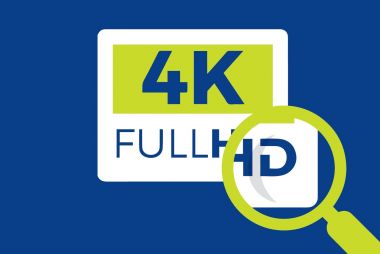The myth of 4K - content and resolution
Why HD is better than 4K in practice for ProAV.

In ProAV, what is called ‘4K’ is actually ‘UHD’, 3840 x 2160 pixels – exactly four times the pixel resolution of HD (1920 x 1080 pixels). The additional 256 horizontal pixels of true 4K (4096 x 2160) being effectively redundant.
- Even if you have spent the money on 4K, effectively you only have an HD display if any part of the system from source (e.g. laptop, Mac, Blue Ray etc) through video transmission (scalers, switchers, HDBaseT) is HD because your 4K display uses four pixels in a 2 x 2 square to show each of the HD pixels its receiving from the input source.
- True 4K, where you have an unbroken flow of 4K resolution from source to display is massively expensive compared with HD – and can even give worse viewer performance if resolution scaling is in your system.
- True 4K, where you have an unbroken flow of 4K resolution from source to display is massively expensive compared with HD – and can even give worse viewer performance if resolution scaling is in your system.
- The only ProAV applications requiring 4K are those needing premium quality video, which the DISCAS standard clearly demonstrates. True 4K is a thing of beauty when you see the real thing.
- If you do have true 4K, this gives presenters the unfortunate ability to show content too small for even the closest views and students to see! Again, the DISCAS standard is essential as it both factors and guides you as to content and font size.